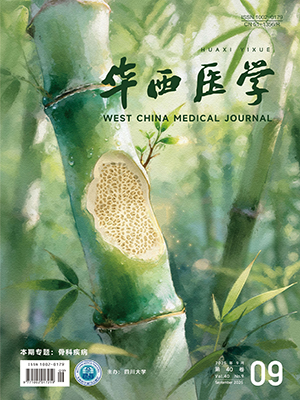| 1. |
Schug TT, Berry DC, Shaw NS, et al. Opposing effects of retinoic acid on cell growth result from alternate activation of two different nuclear receptors[J]. Cell, 2007, 129(4): 723-733.
|
| 2. |
Rochette-Egly C, Chambon P. F9 embryocarcinoma cells: a cell autonomous model to study the functional selectivity of RARs and RXRs in retinoid signaling[J]. Histol Histopathol, 2001, 16(3): 909-922.
|
| 3. |
Donato LJ, Suh JH, Noy N. Suppression of mammary carcinoma cell growth by retinoic acid: the cell cycle control gene Btg2 is a direct target for retinoic acid receptor signaling[J]. Cancer Res, 2007, 67(2): 609-615.
|
| 4. |
Donato LJ, Noy N. Suppression of mammary carcinoma growth by retinoic acid: proapoptotic genes are targets for retinoic acid receptor and cellular retinoic acid-binding proteinⅡ signaling[J]. Cancer Res, 2005, 65(18): 8193-8199.
|
| 5. |
Di-Poi N, Tan NS, Michalik L, et al. Antiapoptotic role of PPAR beta in keratinocytes via transcriptional control of the akt1 signaling pathway[J]. Mol Cell, 2002, 10(4): 721-733.
|
| 6. |
Vo HP, Crowe DL. Transcriptional regulation of retinoic acid responsive genes by cellular retinoic acid binding protein-Ⅱ modulates RA mediated tumor cell proliferation and invasion[J]. Anticancer Res, 1998, 18(1A): 217-224.
|
| 7. |
Budhu AS, Noy N. Direct channeling of retinoic acid between cellular retinoic acid-binding proteinⅡ and retinoic acid receptor sensitizes mammary carcinoma cells to retinoic acid-induced growth arrest[J]. Mol Cell Biol, 2002, 22(8): 2632-2641.
|
| 8. |
Manor D, Shmidt EN, Budhu A, et al. Mammary carcinoma suppression by cellular retinoic acid binding protein-Ⅱ[J]. Cancer Res, 2003, 63(15): 4426-4433.
|
| 9. |
汤参娥, 李萃, 肖志强, 等. 人肺鳞癌组织的比较蛋白质组学研究[J]. 中华肿瘤杂志, 2006, 28(4): 274-279.
|
| 10. |
Fuj K, Kondo T, Yokoo H, et al. Proteomic study of human hepatocellular carcinoma using two-dimensional difference gel electrophoresis with saturation cysteine dye[J]. Proteomics, 2005, 5(5): 1411-1422.
|
| 11. |
Adamson J, Morgan EA, Beesley C, et al. High-level expression of cutaneous fatty acid-binding protein in prostatic carcinomas and its effect on tumorigenicity[J]. Oncogene, 2003, 22(18): 2739-2749.
|
| 12. |
Jing C, Beesley C, Foster CS, et al. Identification of the messenger RNA for human cutaneous fatty acid-binding protein as a metastasis inducer[J]. Cancer Res, 2000, 60(9): 2390-2398.
|
| 13. |
Jing C, Beesley C, Foster CS, et al. Human cutaneous fatty acid-binding protein induces metastasis by up-regulating the expression of vascular endothelial growth factor gene in rat Rama 37 model cells[J]. Cancer Res, 2001, 61(11): 4357-4364.
|
| 14. |
Bouzubar N, Walker KJ, Griffiths K, et al. Ki-67 immunostaining in primary breast cancer: pathological and clinical associations[J]. Br J Cancer, 1989, 59(6): 943-947.
|
| 15. |
Goldhirsch A, Ingle JN, Gelber RD, et al. Thresholds for therapies: highlights of the St Gallen International Expert Consensus on the primary therapy of early breast cancer 2009[J]. Ann Oncol, 2009, 20(8): 1319-1329.
|
| 16. |
唐平, 魏兵, 杨雯娟, 等. 乳腺癌预后/预测因子[J]. 中华病理学杂志, 2011, 40(2): 73-76.
|




